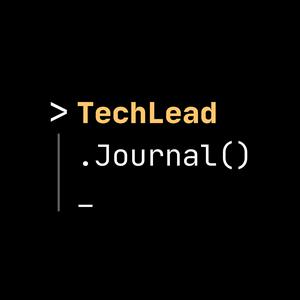#239 - Taming Your Technical Debt: Mastering the Trade-Off Problem - Andrew Brown
(06:06) Brought to you by JellyfishAI tools alone won’t transform your engineering org. Jellyfish provides insights into AI tool adoption, cost, and delivery impact – so you can make better investment decisions and build teams that use AI effectively. See for yourself at jellyfish.co/platform/ai-impact.Why do organizations constantly complain about having too much technical debt? Because they’re solving the wrong problem.In this episode, Dr. Andrew Brown, author of “Taming Your Dragon: Addressing Your Technical Debt,” reveals a profound insight: technical debt isn’t fundamentally a technical problem. It’s a trade-off problem rooted in human bias, organizational systems, and economic incentives. Through his innovative “Technical Debt Onion Model,” Andrew shows how decisions about code quality happen across five interconnected layers, from individual cognitive biases to wicked problem dynamics.Andrew explains why the financial debt analogy is dangerously misleading and, more importantly, how others can rack up debt you’ll eventually pay for. Drawing from behavioral economics, systems thinking, and organizational theory, he reveals why our emotions, not logic, drive most technical decisions, and how to work with this reality rather than against it.Key topics discussed:Why technical debt is a trade-off problem, not technicalHow emotions override logic in critical decisionsThe Technical Debt Onion Model framework explainedPrincipal-agent problems sabotaging your codebaseExternalities: who pays for shortcuts taken today?Why burning down debt is already too lateUlysses contracts for managing future obligationsSystems thinking applied to software developmentWicked problems: why different teams see different solutionsAI’s impact on technical debt creationTimestamps:(00:00:00) Trailer & Intro(00:02:24) Career Turning Points(00:06:06) The Importance of Skilling Up in Tech(00:06:49) The Definition of Technical Debt(00:09:08) The Broken Analogy of Technical Debt as a Financial Debt(00:09:58) The Role of Human Bias and Organization Issues in Technical Debt(00:12:41) Tech Debt is a Trade-off Problem(00:13:07) Building a Healthier Relationship with Technical Debt(00:15:15) The Technical Debt Onion Model(00:18:17) The Onion Model: Trade-Off Layer(00:25:10) The Ulysses Contract for Managing Technical Debt(00:33:03) The Onion Model: Systems Layer(00:36:32) The Onion Model: Economics/Game-Theory Layer(00:41:50) The Onion Model: Wicked Problem Layer(00:48:10) How Organizations Can Start Managing Technical Debt Better(00:52:03) The Al Impact on Technical Debt(00:56:16) 3 Tech Lead Wisdom_____Andrew Brown’s BioAndrew Richard Brown has worked in software since 1999, starting as an SAP programmer fixing Y2K bugs. He realized the biggest problems in software development were human, not technical, and has since helped teams improve performance by addressing these issues.Andrew coaches organizations on software development and quality engineering, focusing on technical debt, risk in complex systems, and project underestimation. He investigates how cognitive biases drive software problems and applies behavioral science techniques to solve them. His research has produced counterintuitive insights and fresh approaches. He regularly speaks at international conferences and runs a growing YouTube channel on these topics.Follow Andrew:LinkedIn – linkedin.com/in/andrew-brown-4b38062YouTube – @behaviouralsoftwareclub705Email –
[email protected] Taming Your Dragon – https://www.amazon.com/Taming-Your-Dragon-Addressing-Technical/dp/B0CV4TTP32/Like this episode?Show notes & transcript: techleadjournal.dev/episodes/239.Follow @techleadjournal on LinkedIn, Twitter, and Instagram.Buy me a coffee or become a patron.


